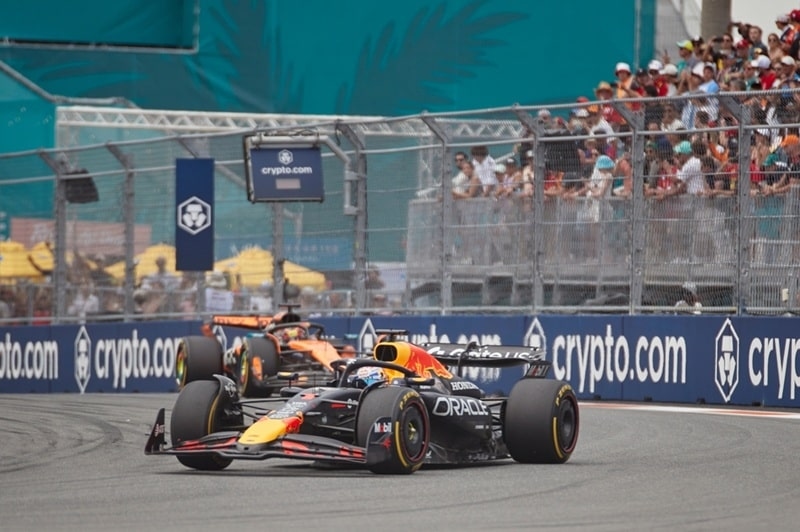How F1 Race Suits are Made: Uncover the Intricate Process

A race suit is a must-have for pro race car drivers. It keeps them safe and helps them perform better on the track. Ever thought about how these high-performance suits are made? Let’s dive into how a race suit is manufactured.
Race Suits Through the Years
The 1950s
Back in the day, when Argentina's F1 driver Juan Manuel Fangio was dominating the circuit and snagging five world championships from 1951 to 1957, safe, fire-resistant race suits were just an idea. Drivers wore whatever they wanted, from Stirling Moss’s flashy overalls to Fangio’s go-to combo of polo shirts, work jackets, and slacks. It seems wild now, just like Fangio's lightweight headgear, but it didn’t stop him from being known as El Maestro. He won 24 out of 51 races, boasting an impressive win rate of 46.15 percent.
Late '60s and early '70s
Did any F1 driver look cooler than three-time world champion Jackie Stewart in the late '60s and early '70s? He managed to show off his Scottish pride with his famous white suit and helmet, but he was rocking a much safer outfit compared to earlier drivers like Fangio. After some fiery accidents in the early '60s, fire-retardant suits started to be created, and in 1963, the FIA set its first rules about fire suits. The Nomex 'Heat Shield Firesuit' made its debut in motorsport after NASCAR's Bill Simpson learned about the material from NASA astronaut Pete Conrad.
1976-1987
In 1975, the FIA set standards for fire-retardant suits, but the horrific 1976 crash at Nürburgring that almost took the life of Austria's three-time world champion Niki Lauda showed that cotton suits were still way too flammable. Drivers and their teams began to take safety more seriously. A few years later, in 1979, drivers like Lauda and Mario Andretti were sporting bulky, uncomfortable five-layer suits made to NASA specs, using materials from astronaut suits.
1987-1994
Ayrton Senna’s 1987 race suit, which met the FIA’s 1986 standards, is a significant part of F1 history. The Brazilian wore it while driving Team Lotus’ 99T car to its last Grand Prix win at Monaco and during a season where he snagged seven podium finishes, setting the stage for his future dominance. This 1987 suit, in bright yellow, is typical of F1 overalls from that time, with teams and sponsors plastering their logos all over them, adding extra weight. Tobacco sponsorships, which were common back then, have been banned since 2006. Senna's Monaco suit, complete with strong shoulder epaulettes, sold at auction for €38,400 [£33,709 / $45,343].
1994-2018
Max Verstappen’s 2018 race gear is just like what modern drivers and pit crews wear. Since 1994, the FIA has required that pit crews follow the same safety rules as drivers. Recently, the focus has been on balancing protection and comfort. Gone are the heavy five-layer fire suits; now, they use lightweight, breathable Nomex fabric that goes through a tough washing, drying, and testing process at super high temperatures. Everything, from zippers to gloves and socks, needs to handle that same heat. To cut down on weight and bulk, sponsors’ logos are now printed instead of stitched on.
You May Also Like: Unveiling the Mystery: The Real Reason Why F1 Drivers Wear Balaclavas
Creating a Race Suit
Choosing the Right Material

The first thing to do when making a race suit is to pick the right material. Race suits are usually made from fire-resistant stuff like Nomex, which is a synthetic aramid fiber. Nomex is great because it’s really good at resisting heat and flames, making it perfect for keeping drivers safe from fire.
Designing the Pattern
After picking the material, the next step is to design a pattern for the suit. This means taking accurate measurements of the driver’s body to make sure it fits just right. The pattern is drawn up, keeping in mind any specific design features that the driver or the team wants.
Cutting and Putting It Together
Once the pattern is set, the panels for the race suit are cut out from the chosen material. Then, those panels are sewn together carefully, with a focus on reinforced stitching in areas that take a lot of stress. It’s really important to make sure the suit allows for maximum flexibility and comfort since drivers need to move freely while racing.
Adding Custom Touches and Branding
A lot of race suits get personalized with the driver’s name, team logo, and sponsor logos. These custom touches are usually added using heat transfer, screen printing, or embroidery. Branding is not just about showing who the driver is; it’s also a way to advertise for sponsors.
Checking for Quality

Before a race suit is ready to hit the track, it goes through some tough quality control checks. These checks make sure the suit meets safety standards, has good stitching, and fits the driver well. It’s super important for every suit to pass these tests to keep drivers safe during races.
Similar Reads You May Enjoy: The Ultimate Guide to the Perfect F1 Seat Fit: How Do F1 Drivers Sit?
Conclusion
Making a race suit is all about careful material selection, precise pattern design, detailed cutting and assembly, customization, and thorough quality checks. The final product is a high-performance suit that not only protects the driver but also shows off their personal brand. So, the next time you see a race car driver all suited up, think about the skill and detail that goes into making their race suit. We hope that the entire evolution and process increases your interest and engagement with the wonderful world of Formula One.
This content was created by AI




